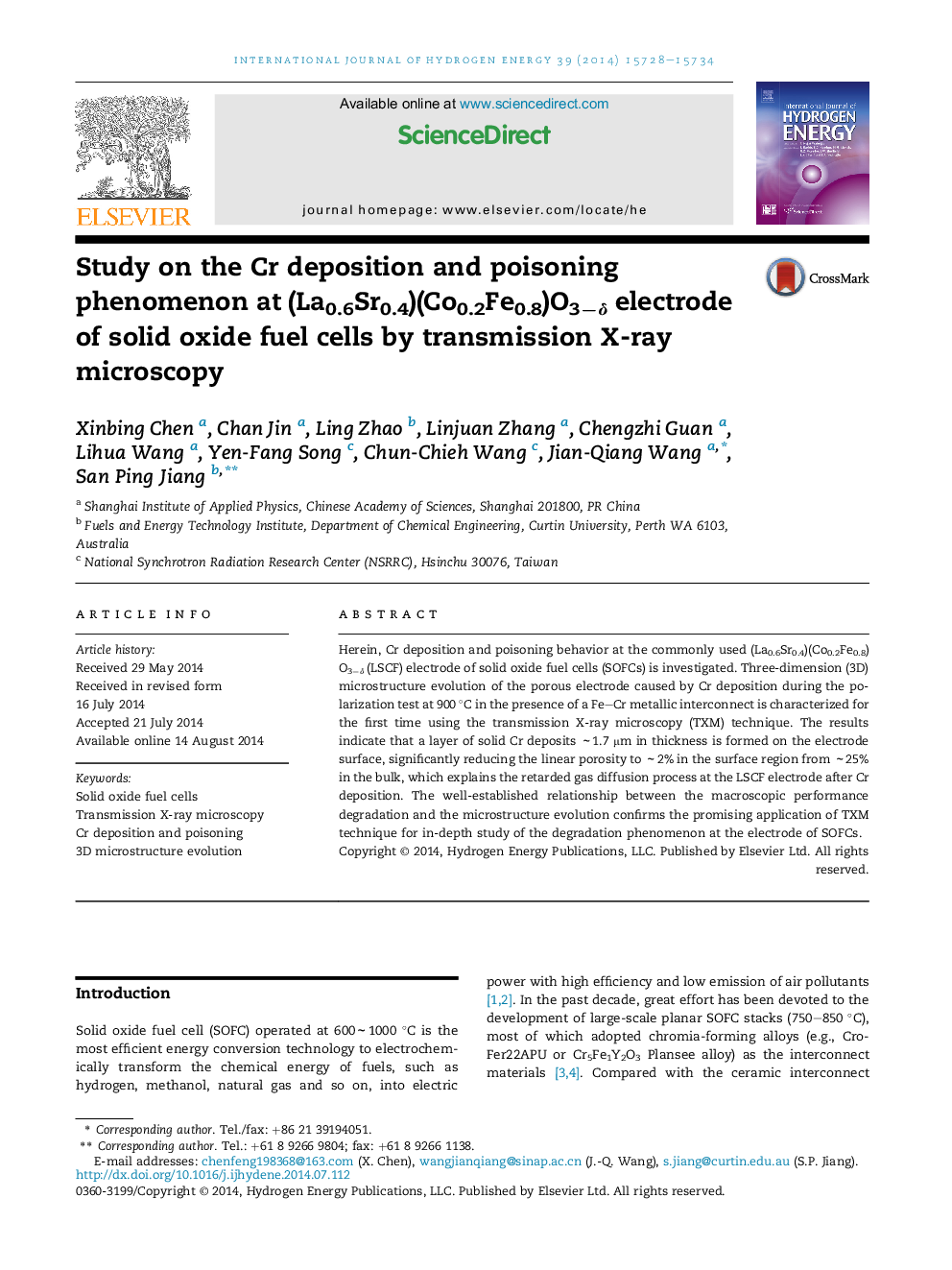| کد مقاله | کد نشریه | سال انتشار | مقاله انگلیسی | نسخه تمام متن |
|---|---|---|---|---|
| 1272411 | 1497481 | 2014 | 7 صفحه PDF | دانلود رایگان |

• Cr deposition behavior at the LSCF cathode of SOFCs was characterized by TXM.
• 3D distribution of Cr deposits in the porous electrode was successfully observed.
• Electrode performance degradation was related to the microstructure evolution.
Herein, Cr deposition and poisoning behavior at the commonly used (La0.6Sr0.4)(Co0.2Fe0.8)O3−δ (LSCF) electrode of solid oxide fuel cells (SOFCs) is investigated. Three-dimension (3D) microstructure evolution of the porous electrode caused by Cr deposition during the polarization test at 900 °C in the presence of a Fe–Cr metallic interconnect is characterized for the first time using the transmission X-ray microscopy (TXM) technique. The results indicate that a layer of solid Cr deposits ~1.7 μm in thickness is formed on the electrode surface, significantly reducing the linear porosity to ~2% in the surface region from ~25% in the bulk, which explains the retarded gas diffusion process at the LSCF electrode after Cr deposition. The well-established relationship between the macroscopic performance degradation and the microstructure evolution confirms the promising application of TXM technique for in-depth study of the degradation phenomenon at the electrode of SOFCs.
Figure optionsDownload as PowerPoint slide
Journal: International Journal of Hydrogen Energy - Volume 39, Issue 28, 23 September 2014, Pages 15728–15734